:help:
So instead of explaining, I figureed I would show you. This 90 GL has been up and running for 2 years as a marine only. I was maintaining 2 tanks. The other was a 40 gl Reef. I decided to consolidate. I made this refuge out of a 30 gl to feed the 90. I then brought my entire 40 gl over to the 90. Everything was workign well at first but then I started getting tons of sime alge and hair algee(at least I think that is what it was) My consern is that it is micro algg from my fuge.
I am using RO water. Feedings have been reduced.
I used Phosphagard to try to reduce my phosphates. They are at 0 now.
My nitrates have come down dramaticly from 80 in the beginning to 15.
Amonia is 0
Nitrites 0
The only areas I am still having issues with is ....
My PH seems to drop easy and my calcium is low.
As you can see in these pics, I have hair algee growing out of control. I have also lost my blue cromies, I am not sure if that is due to water Quality or my brittle star.
Now my Antheius's scales look weak and stripped.
I believe there are multiple problems.
1. How do I reduce the hair and slime alge? (Could the hair algee be micro algee)
2. What can I do to keep the ph up besides ph buffer, I know KH can cause this issue, but the only resolution I have found is water changes.
3. same with calcium, could it be because my corals are growing quick? How can I control those levels better.
Any help would be much appreciated.
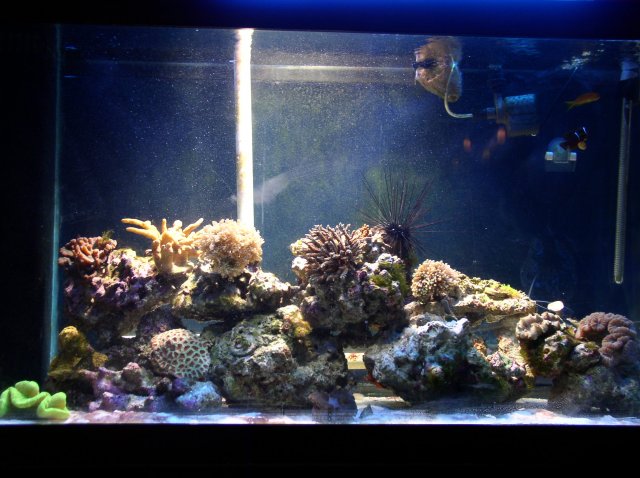
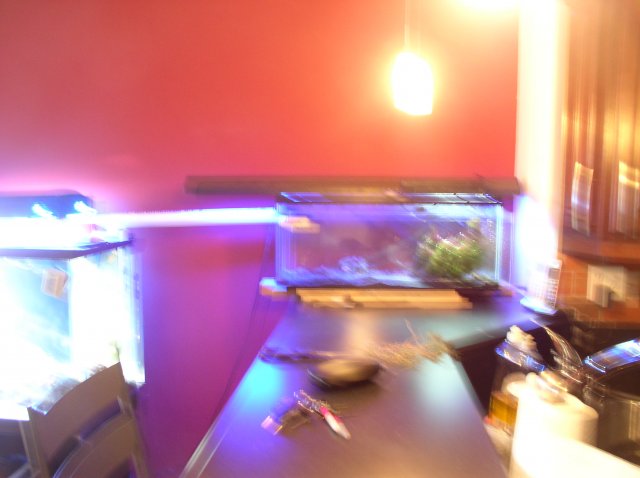
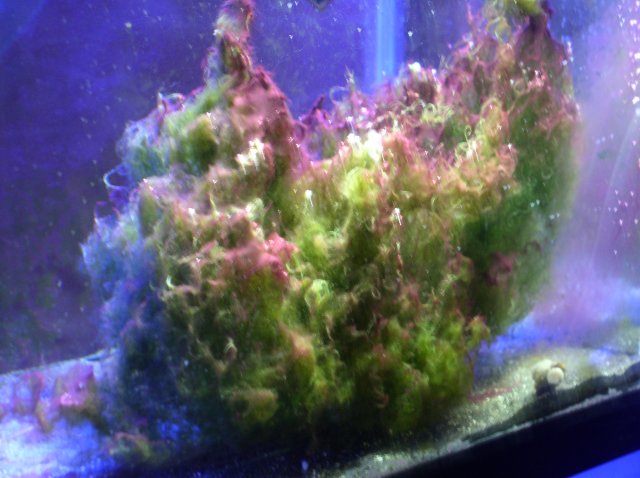
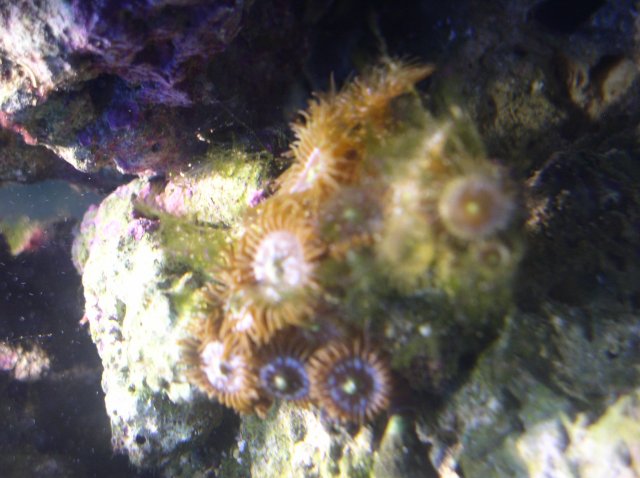
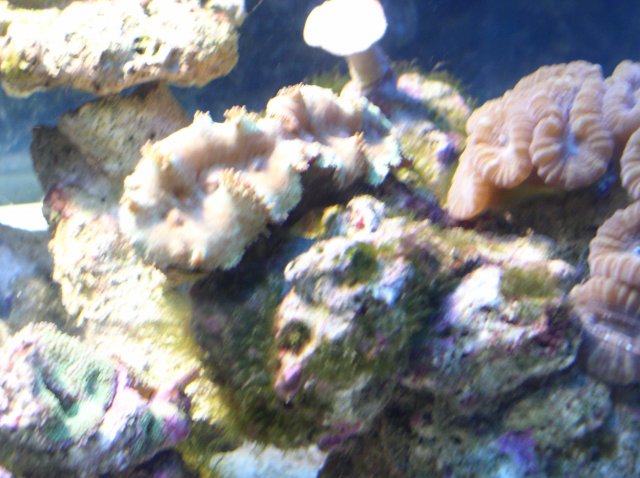
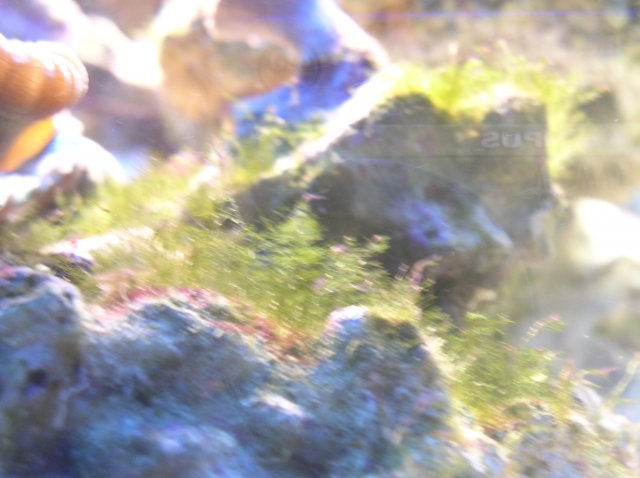
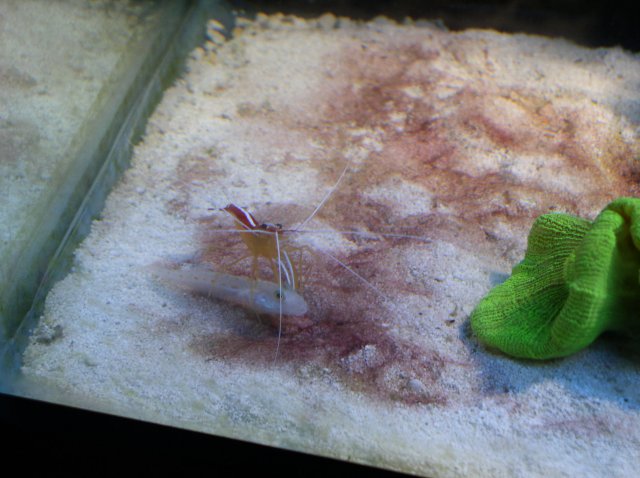
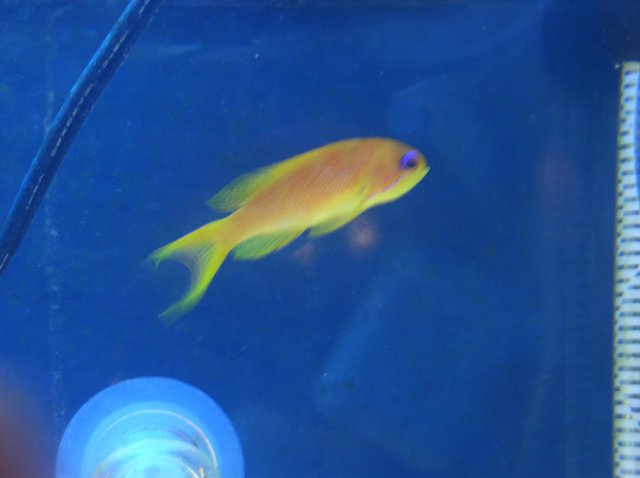
So instead of explaining, I figureed I would show you. This 90 GL has been up and running for 2 years as a marine only. I was maintaining 2 tanks. The other was a 40 gl Reef. I decided to consolidate. I made this refuge out of a 30 gl to feed the 90. I then brought my entire 40 gl over to the 90. Everything was workign well at first but then I started getting tons of sime alge and hair algee(at least I think that is what it was) My consern is that it is micro algg from my fuge.
I am using RO water. Feedings have been reduced.
I used Phosphagard to try to reduce my phosphates. They are at 0 now.
My nitrates have come down dramaticly from 80 in the beginning to 15.
Amonia is 0
Nitrites 0
The only areas I am still having issues with is ....
My PH seems to drop easy and my calcium is low.
As you can see in these pics, I have hair algee growing out of control. I have also lost my blue cromies, I am not sure if that is due to water Quality or my brittle star.
Now my Antheius's scales look weak and stripped.
I believe there are multiple problems.
1. How do I reduce the hair and slime alge? (Could the hair algee be micro algee)
2. What can I do to keep the ph up besides ph buffer, I know KH can cause this issue, but the only resolution I have found is water changes.
3. same with calcium, could it be because my corals are growing quick? How can I control those levels better.
Any help would be much appreciated.










